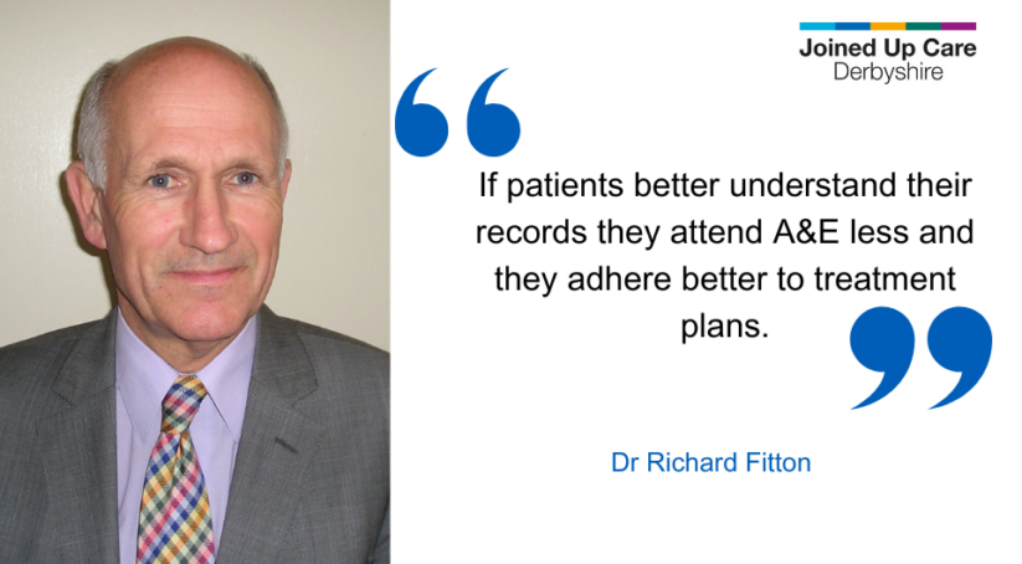Blog: Safety and outcomes improve when patients access their own health records. This is why it matters.
By Dr Richard Fitton, retired Derbyshire GP and contributor to the World Health Organization’s Patient Safety Charter
I became interested in sharing records with patients during the 1980s while working in an inner-city practice – an area of moderate deprivation.
Our patients died six or seven years earlier than patients who used the same health facilities but who lived in a different area five or six miles away.
Poor health literacy was part of the cause of the increased mortality and illness and using the records seemed a way to increase health literacy.
I moved to a single-handed practice to design and build a patient centred medical centre, aided by a large and interested patient participation group.
The new medical centre included an information room manned and updated by patients.
Patients taught other patients to take their blood pressures and to manage their weight.
The patients presented their hopes and experiences at local and national conferences.
Patients quickly learned to use the records to train themselves in self-management and shared them with health professionals outside of the practice.
I was already sharing records with patients when I was asked to give evidence at the trail of Dr Harold Shipman.
Dr Shipman had murdered over two hundred patients.
He altered the notes of the patient that I signed the cremation form of to hide his crime.
I felt that patients’ relatives would have spotted the falsification of the records if access to records was standard.
My involvement with the National Patient Safety Agency after the trial helped to lead to the General Medical Council and, later, the World Health Organization (WHO), adopting patient access to records as a safety measure.
The WHO Patient Safety Charter published in April this year includes the right for patients to access their records.
Wikipedia records that lifelong health records were first introduced to all general practitioners in the UK in January 1921.
Cards were coloured red for male patients and blue for female patients.
They provided an easy to visualise summary, prevented unnecessary lengthy note taking, and could be carried in a doctor’s coat pocket when out on a practice visit.
However, from the 1950s the relatively small Lloyd George envelopes became increasingly bulky and were replaced partially by A4 notes and then by computerised notes.
In recent years NHS and social care organisations have worked together in local areas to gather information into a summary care record, such as the Derbyshire Shared Care Record.
Digital health records in the NHS have role-based access controls. These allow only certified and trained professionals to access digital records.
An audit trail records the names of the professionals who have accessed the records and the dates on which they accessed the records.
Information governance officers and data protection officers oversee the use of the health records for the secondary purposes of research and planning.
So how does patient access to records help the NHS and social care?
- Patients detect and report notes of other patients that have been incorrectly put in their notes.
- Patients detect and report errors and omissions.
- Patients report inappropriate access to their records by examining the audit trail of users.
- Patients report clinical content that they do not wish to be shared further.
- And how does patient access to records help patients and carers?
- Patients are better able to give fully informed consent for treatments.
- Patients have more complete and satisfying consultations with healthcare professionals.
- Patients use the record to represent themselves when complex issues which they do not understand are discussed with other professionals.
- Patients share the records with carers and families. Parents access their children’s records until 16 years of age. (Children can ask this to finish after the age of 13.)
- Patients look up their results, diagnoses and care pathways become better at managing their treatments and long-term conditions.
In short, access to patient records puts patient in charge of their own health.

